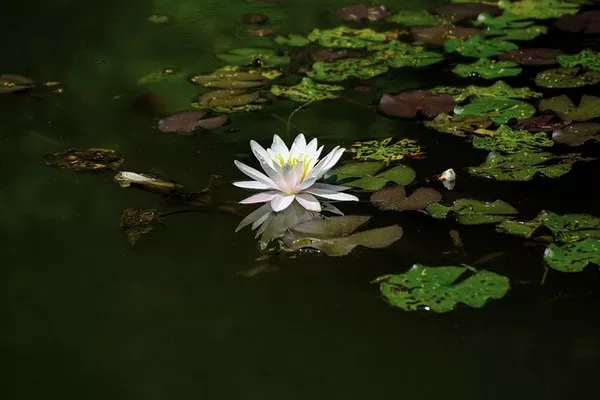Gardening enthusiasts often face the challenge of transforming shaded areas into vibrant, blossoming havens. While many plants thrive in direct sunlight, some of nature’s most elegant creations prefer the gentle embrace of shadows. Shade-loving flowers have unique characteristics that allow them to flourish in lower light conditions, adding beauty, color, and life to your garden. In this comprehensive guide, we’ll explore a variety of shade-loving flowers, their characteristics, and tips for nurturing a thriving shade garden.
Understanding Shade
Before delving into the world of shade-loving flowers, it’s essential to understand the different types of shade and their characteristics. Shade can vary from dappled, filtered sunlight to deep, dense shadows. Here are some common shade categories:
Full Shade: These areas receive less than two hours of direct sunlight per day. Full shade is often found beneath dense tree canopies or structures like porches and overhangs.
Partial Shade: Partial shade areas receive two to four hours of sunlight, either in the morning or afternoon. Trees with high canopies or dappled sunlight often create partial shade.
Filtered Shade: Filtered shade occurs when sunlight passes through thin branches, leaves, or structures, casting shifting patterns of light and shadow throughout the day.
Dry Shade: Dry shade is often found under large trees with extensive root systems that absorb moisture from the soil, creating challenging conditions for many plants.
Moist Shade: In contrast, moist shade areas receive consistent moisture due to factors such as proximity to water sources or well-drained soil.
Now, let’s explore a diverse selection of shade-loving flowers, each suited to different shade conditions.
Shade-Loving Flowers for Full Shade:
Hostas (Hosta spp.): Known for their lush foliage in various shades of green and blue, hostas thrive in full shade. They produce spikes of delicate, bell-shaped flowers in late spring or early summer.
Bleeding Heart (Dicentra spectabilis): The elegant, heart-shaped flowers of the bleeding heart plant bring a touch of romance to shaded gardens. These perennials bloom in early spring and prefer full shade with consistently moist soil.
Columbine (Aquilegia spp.): With distinctive, spurred flowers in various colors, columbines flourish in full to partial shade. They attract pollinators like hummingbirds and butterflies, making them a delightful addition to your garden.
Shade-Loving Flowers for Partial Shade:
Astilbe (Astilbe spp.): Astilbes are prized for their feathery plumes of flowers that add texture and color to partial shade gardens. They are moisture-loving perennials that bloom in mid-summer.
Impatiens (Impatiens walleriana): Impatiens are popular annuals celebrated for their vibrant, jewel-toned blooms. They thrive in partial shade and provide continuous color throughout the growing season.
Lungwort (Pulmonaria spp.): Lungworts offer both unique foliage and attractive, tubular flowers. They excel in partial shade, especially in moist, well-drained soil. Lungwort flowers change color from pink to blue as they age.
Shade-Loving Flowers for Filtered Shade:
Begonias (Begonia spp.): Begonias come in various forms, from fibrous-rooted bedding plants to tuberous varieties. They adapt well to filtered shade, producing beautiful, long-lasting flowers in a range of colors.
Foxglove (Digitalis purpurea): Foxgloves are biennials known for their tall spikes of tubular flowers. They thrive in filtered shade and are a favorite among pollinators, including bees and bumblebees.
Shade-Loving Flowers for Dry Shade:
Lily of the Valley (Convallaria majalis): These fragrant, bell-shaped flowers are well-suited to dry shade conditions. Lily of the Valley thrives in low light and is often used as a ground cover.
Japanese Forest Grass (Hakonechloa macra): This ornamental grass offers a unique texture and bright green foliage that brightens up dry shade areas. It’s a low-maintenance option for shaded gardens.
Shade-Loving Flowers for Moist Shade:
Hellebores (Helleborus spp.): Also known as Lenten Roses, hellebores bloom in late winter or early spring, providing early-season color to moist shade gardens. Their long-lasting flowers come in various shades, including pink, white, and deep purple.
Toad Lily (Tricyrtis spp.): Toad lilies are known for their orchid-like, speckled flowers that thrive in moist shade conditions. They bloom in late summer and add a touch of exotic beauty to the garden.
Tips for Growing Shade-Loving Flowers:
Choose the Right Plant: Select shade-loving plants that are well-suited to your specific shade conditions, whether full, partial, filtered, dry, or moist shade.
Prepare the Soil: Amend your soil with organic matter like compost to improve moisture retention and drainage, as well as to provide essential nutrients.
Mulch: Apply a layer of mulch to conserve moisture, suppress weeds, and regulate soil temperature in shaded areas.
Water Wisely: Keep the soil consistently moist for moisture-loving shade plants, but avoid waterlogging. Use a soaker hose or drip irrigation to deliver water directly to the root zone.
Prune and Thin: Regularly prune and thin out overgrown vegetation to allow filtered sunlight to reach the lower layers of your shade garden.
Fertilize Appropriately: Use a balanced, slow-release fertilizer to provide the necessary nutrients for healthy growth, following package instructions.
Monitor for Pests and Diseases: Keep an eye out for common shade-related pests and diseases, such as slugs and powdery mildew, and address them promptly.
In conclusion
transforming shady areas into enchanting gardens filled with shade-loving flowers is a rewarding endeavor. By understanding the different types of shade, choosing the right plants, and providing proper care, you can create a serene and beautiful garden oasis that thrives in the gentle embrace of shadows. Whether you have a full shade woodland garden or a partially shaded backyard, there’s a shade-loving flower waiting to bloom and brighten your outdoor space.


